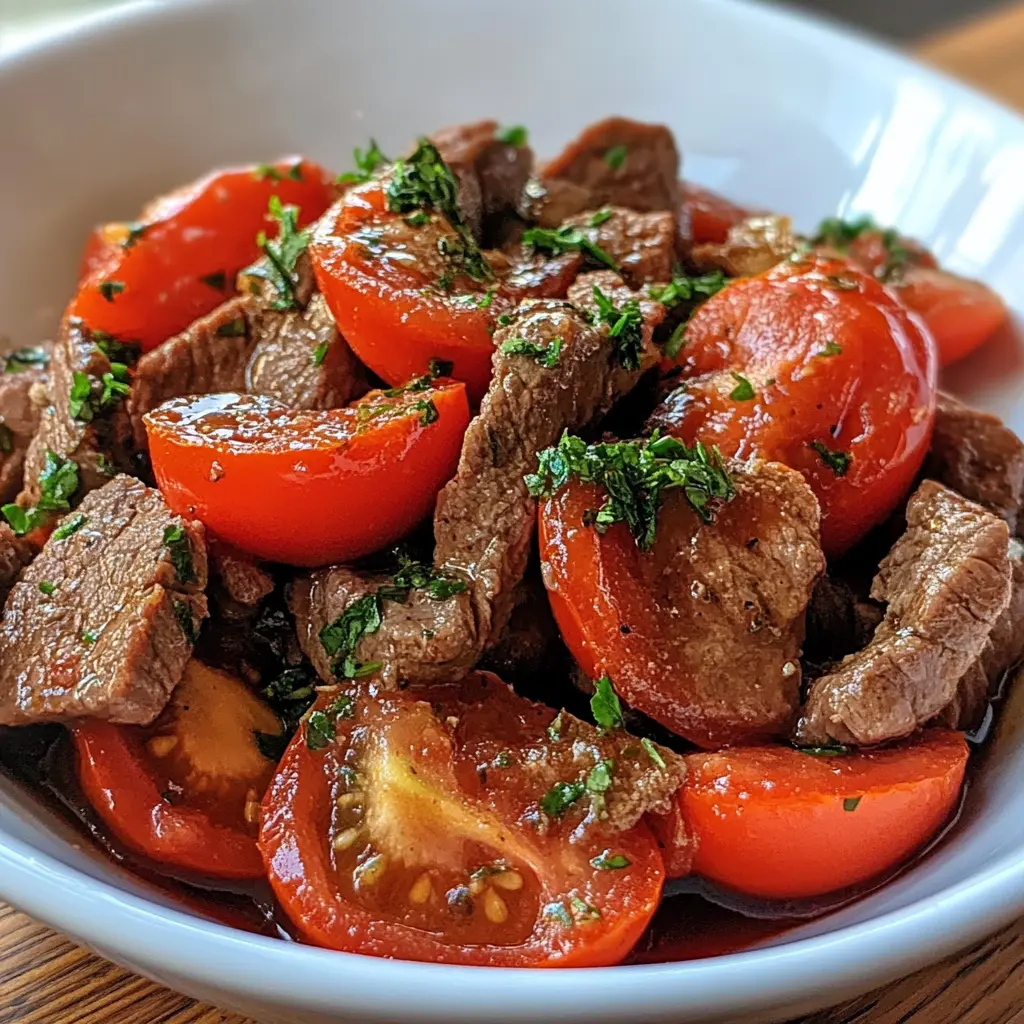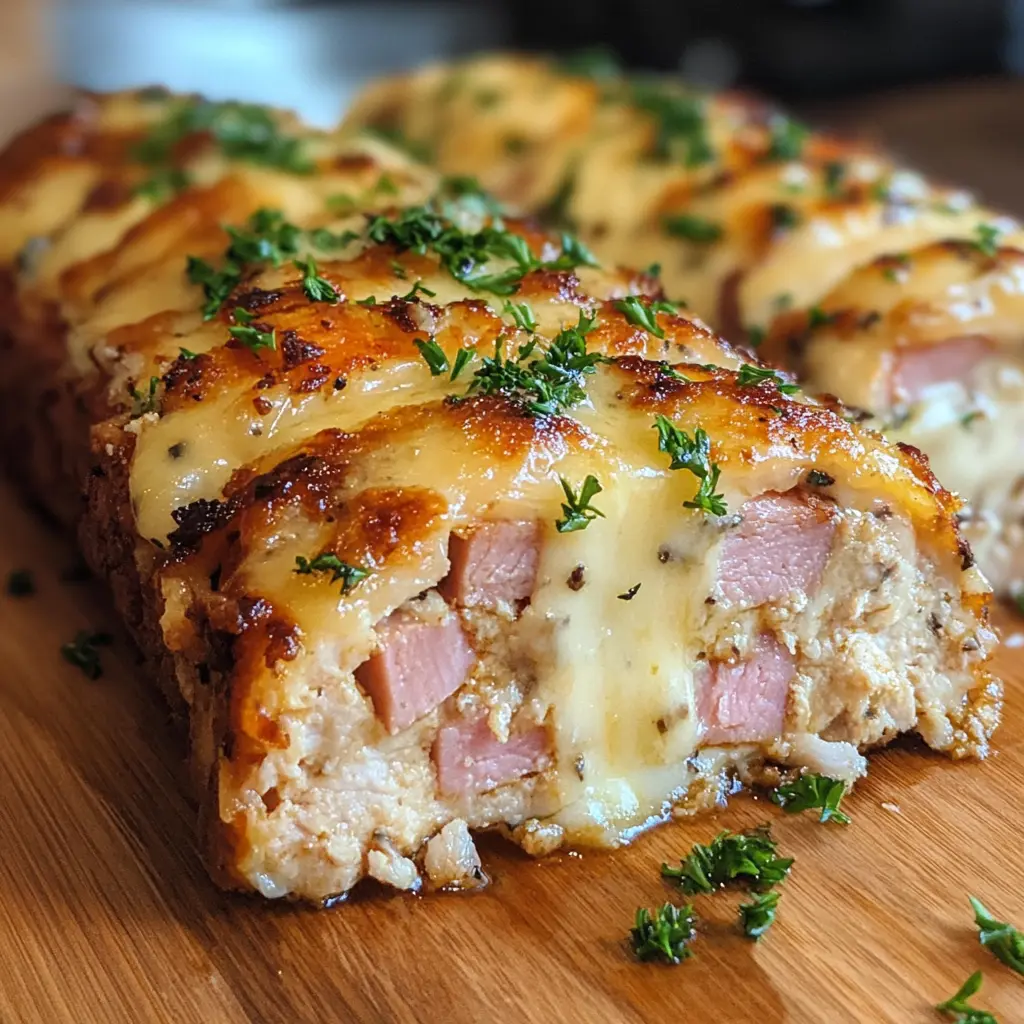Introduction
Burger bowls are a delicious and healthy alternative to traditional burgers, offering all the classic flavors without the carbs from a bun. Perfect for those following a keto or low-carb diet, these bowls are packed with protein, fresh vegetables, and flavorful sauces. They are also highly customizable, allowing you to create a meal that fits your taste preferences and dietary needs. Whether you enjoy a classic cheeseburger, a spicy twist, or a plant-based option, burger bowls are an easy and satisfying meal that can be prepared in minutes.
Table of Contents
Introduction to Burger Bowl Recipe
What Is a Burger Bowl?
A burger bowl is essentially a deconstructed burger served in a bowl instead of between buns. It includes all the traditional burger components like a beef patty, lettuce, tomatoes, cheese, and sauce but is served over a bed of greens or other low-carb bases. This makes it a great option for those looking to cut down on bread while still enjoying the rich flavors of a classic burger.
Why Choose a Burger Bowl Over a Traditional Burger?
One of the main reasons people opt for a burger bowl is its lower carbohydrate content. By removing the bun, you significantly reduce the calorie count while keeping the meal filling and flavorful. Burger bowls are also more versatile, allowing for a wider variety of ingredients and toppings. They are easier to eat on the go, less messy, and can be customized to fit specific dietary needs, such as keto, paleo, or gluten-free diets.
Ingredients for the Perfect Burger Bowl
Choosing the Best Ground Beef
The key to a great burger bowl starts with high-quality ground beef. Look for ground beef with an 80/20 ratio, meaning 80% lean meat and 20% fat. This balance ensures a juicy and flavorful patty without being too greasy. If you’re looking for a leaner option, 90/10 beef works well, but you may need to add a little olive oil or avocado oil to keep the meat from drying out. For those who prefer an alternative, ground turkey, chicken, or even plant-based substitutes like lentils or mushrooms can be used.
Fresh and Flavorful Toppings
The toppings you choose can make or break your burger bowl. Fresh vegetables like lettuce, tomatoes, cucumbers, and onions add crunch and balance the richness of the beef. Pickles bring a tangy bite, while avocados provide a creamy texture. For a boost of flavor, shredded cheese, crispy bacon, or sautéed mushrooms are excellent additions.
If you like some heat, sliced jalapeños or a drizzle of hot sauce can take your bowl to the next level. For a more refreshing option, adding coleslaw or shredded cabbage can give your burger bowl a satisfying crunch while keeping it light.
Essential Seasonings and Sauces
Seasoning the beef properly is crucial to getting the best flavor. A simple mix of salt, black pepper, garlic powder, and onion powder works well, but you can also experiment with smoked paprika, Worcestershire sauce, or even Dijon mustard for added depth.
Sauces bring everything together, adding creaminess and tanginess to the dish. Classic choices include homemade burger sauce, ranch dressing, barbecue sauce, or spicy mayo. If you’re looking for a healthier option, Greek yogurt-based dressings or avocado-based sauces can be a great alternative without sacrificing taste.
How to Make a Burger Bowl Step by Step
Preparing the Beef Patties
Start by selecting your preferred ground meat. In a mixing bowl, combine the ground beef with seasonings like salt, black pepper, garlic powder, onion powder, and a splash of Worcestershire sauce for added depth. Mix gently to avoid overworking the meat, which can make the patties tough.
Divide the meat into equal portions and shape them into patties about half an inch thick. If you want a juicier patty, make a small indentation in the center of each one using your thumb. This prevents the burger from puffing up in the middle while cooking.
Cooking Methods: Grill, Pan-Fry, or Bake
There are several ways to cook burger patties, depending on your preference and available equipment.
- Grilling: Preheat the grill to medium-high heat and cook the patties for about 3-4 minutes per side, or until they reach your desired doneness. A meat thermometer should read 160°F for well-done beef.
- Pan-Frying: Heat a cast-iron skillet over medium-high heat, add a little oil, and cook the patties for 4-5 minutes per side. This method gives the patties a nice crust while keeping the inside juicy.
- Baking: For an easier, hands-free approach, place the patties on a baking sheet lined with parchment paper and bake at 375°F for about 15-20 minutes. Flip them halfway through for even cooking.
If you’re adding cheese, place a slice on top of each patty during the last minute of cooking and cover with a lid to let it melt perfectly.
Assembling the Ultimate Burger Bowl
Once the patties are cooked, it’s time to build your bowl. Start with a base of chopped lettuce, spinach, or a mix of greens. Place the patty on top, then layer on your favorite toppings like sliced tomatoes, pickles, onions, and avocado. Add a handful of shredded cheese or crumbled bacon for extra flavor.
Finally, drizzle your favorite sauce over the bowl. Classic burger sauce, ranch dressing, or a spicy mayo can bring all the ingredients together. If you want some extra crunch, top it off with crispy onions or toasted sesame seeds.
Burger bowls are best served immediately, but you can also prepare the components ahead of time for quick and easy meal prep.

Best Toppings and Variations
Classic Cheeseburger Bowl
For those who love a traditional cheeseburger, this version keeps things simple yet flavorful. Start with a base of crisp romaine lettuce or iceberg for a refreshing crunch. Add a juicy beef patty seasoned with salt, pepper, and garlic powder, then top it with a slice of melted cheddar cheese. Layer on classic toppings like tomato slices, red onion, and pickles. Drizzle with burger sauce or a simple mix of ketchup and mustard for that authentic cheeseburger taste.
Keto and Low-Carb Options
If you’re following a keto or low-carb diet, you can make a few swaps to keep your burger bowl healthy while still delicious. Choose a fattier ground beef (like 85/15 or 80/20) for extra flavor and richness. Instead of regular ketchup, opt for a sugar-free version, and use mayonnaise or a homemade avocado sauce as a creamy dressing. Adding ingredients like crispy bacon, blue cheese crumbles, and sautéed mushrooms can enhance the taste while keeping the carb count low.
For an extra boost of healthy fats, top your burger bowl with sliced avocado or a drizzle of olive oil. If you’re looking for crunch, swap croutons for crushed pork rinds.
Vegan and Vegetarian Alternatives
You don’t need meat to enjoy a delicious burger bowl. A plant-based version can be just as satisfying. Swap out the beef patty for a black bean burger, grilled portobello mushroom, or a store-bought plant-based patty. Use dairy-free cheese and a vegan mayo-based sauce to keep it fully plant-based.
For added texture and protein, consider chickpeas, tofu crumbles, or quinoa as a base. Roasted bell peppers, caramelized onions, and guacamole can bring extra layers of flavor. If you’re looking for a spicy kick, add sriracha or a tahini-based spicy dressing.
No matter your dietary needs, burger bowls can be customized to fit your preferences while delivering all the bold flavors of a classic burger.
How to Make a Healthy Homemade Burger Bowl
Choosing Lean Proteins
A healthier burger bowl starts with the right protein. Lean ground beef (90/10) is a great option, as it reduces excess fat while still keeping the meat juicy and flavorful. If you prefer a leaner alternative, ground turkey, chicken, or even plant-based protein like lentils or black beans can work well.
To enhance flavor without adding unnecessary calories, mix the meat with minced garlic, diced onions, and a touch of Dijon mustard. This keeps the patties juicy and packed with taste without relying on extra fat.
Adding Nutrient-Dense Vegetables
Vegetables not only add texture and color but also increase the nutrient content of your burger bowl. Instead of just using lettuce, consider a mix of dark leafy greens like spinach, kale, or arugula, which are high in fiber and antioxidants.
For extra crunch, add shredded cabbage, bell peppers, cucumbers, or radishes. Roasted sweet potatoes or grilled zucchini can also bring natural sweetness and depth of flavor. If you’re looking to boost the protein and fiber, toss in some chickpeas, black beans, or quinoa.
Healthy Dressing and Sauce Choices
Traditional burger sauces can be high in sugar and unhealthy fats, but making your own at home can be both healthier and more flavorful. A simple yogurt-based sauce with Greek yogurt, lemon juice, garlic, and a dash of hot sauce can replace heavy dressings.
Other great options include avocado-based dressings, balsamic vinaigrette, or a tahini-based sauce. If you love a classic burger sauce, try a homemade version using low-fat mayo, sugar-free ketchup, mustard, and a splash of pickle juice for that signature tang.

By making these smart ingredient swaps, your burger bowl remains just as satisfying while being healthier and more balanced.
Looking for inspiration? Try The Best Chicken Philly Cheesesteak Recipe for another high-protein meal.
The Best Slimming World Burger Sauce Recipe
Ingredients for a Guilt-Free Sauce
A great burger sauce enhances the flavors of your burger bowl without adding unnecessary calories. This Slimming World-friendly version keeps things light while maintaining that creamy, tangy taste. Here’s what you’ll need:
- 4 tbsp fat-free Greek yogurt or quark
- 2 tbsp light mayonnaise
- 1 tbsp sugar-free ketchup
- 1 tsp Dijon mustard
- 1 tsp Worcestershire sauce
- ½ tsp smoked paprika
- ½ tsp garlic powder
- ½ tsp onion powder
- 1 tsp pickle juice (from a jar of pickles)
- Salt and black pepper to taste
Step-by-Step Guide to Making It
- In a small bowl, combine the Greek yogurt and light mayonnaise to create a creamy base.
- Stir in the sugar-free ketchup, Dijon mustard, and Worcestershire sauce, mixing well.
- Add the smoked paprika, garlic powder, and onion powder for depth of flavor.
- Pour in the pickle juice and mix until smooth.
- Taste and season with salt and black pepper as needed.
- Cover and refrigerate for at least 15 minutes to let the flavors blend.
How to Store and Use It
This homemade burger sauce can be stored in an airtight container in the refrigerator for up to five days. It’s perfect for drizzling over your burger bowl, using as a dip for fries or veggies, or even spreading on a whole wheat wrap for a lighter burger alternative.
By making your own sauce, you control the ingredients and avoid added sugars and preservatives found in store-bought versions. This keeps your burger bowl both delicious and waistline-friendly.
Can You Eat Burger Bowls Cold?
When to Enjoy a Cold Burger Bowl
Burger bowls are typically enjoyed warm, but they can also be eaten cold, making them a convenient meal prep option. A cold burger bowl works well for packed lunches, picnics, or quick meals when you don’t have time to reheat food. The key is to use ingredients that maintain their texture and flavor even when chilled.
Cold burger bowls are perfect for summer when you want a refreshing meal without having to heat up the kitchen. By using fresh toppings like lettuce, cucumbers, tomatoes, and pickles, you can create a crisp, satisfying dish that tastes great straight from the fridge.
How to Properly Store Leftovers
If you plan to eat a burger bowl cold, storing the ingredients correctly is important to keep them fresh. Keep cooked burger patties in an airtight container separate from the vegetables and sauces. This prevents sogginess and keeps each ingredient at its best quality.
For best results:
- Store cooked patties for up to 3 days in the fridge.
- Keep chopped vegetables in a separate airtight container.
- Store sauce in a small jar or container to add just before eating.
Best Ingredients for a Cold Version
Not all toppings taste as good when eaten cold, so choosing the right ingredients is key. Here are some of the best options for a chilled burger bowl:
- Proteins: Grilled chicken, turkey patties, or plant-based patties hold up well when cold.
- Greens: Romaine, spinach, or kale stay crisp and fresh.
- Crunchy veggies: Cucumbers, bell peppers, shredded carrots, and radishes add great texture.
- Cheese: Feta, cheddar, or mozzarella can be enjoyed cold without losing flavor.
- Dressings: Yogurt-based or vinegar-based dressings work best instead of creamy sauces that may thicken when cold.
With the right ingredients and storage methods, a cold burger bowl can be just as delicious and satisfying as a warm one.
Common Burger Bowl Mistakes to Avoid
Overcooking or Undercooking the Beef
One of the biggest mistakes when making a burger bowl is not cooking the beef properly. Overcooked patties can become dry and tough, while undercooked meat can be unsafe to eat. The best way to ensure a perfectly cooked patty is to use a meat thermometer. The internal temperature should reach 160°F for ground beef and 165°F for ground turkey or chicken.
To keep the meat juicy, avoid pressing down on the patties while cooking, as this squeezes out the flavorful juices. Letting the patties rest for a couple of minutes after cooking also helps retain moisture.
Using the Wrong Toppings
Not all toppings work well in a burger bowl. Some ingredients, like soggy lettuce or watery tomatoes, can make the dish unappetizing. Instead, choose crisp vegetables like romaine, arugula, or shredded cabbage, which hold up better with warm ingredients.
Another common mistake is overloading the bowl with too many toppings, which can overpower the flavors of the beef. Stick to a balance of textures and flavors, such as crunchy pickles, creamy avocado, and fresh tomatoes, to create a satisfying meal.
Skipping the Right Seasonings
Seasoning is essential for bringing out the best flavors in a burger bowl. Simply adding salt and pepper isn’t enough to create a truly delicious dish. Using seasonings like garlic powder, onion powder, smoked paprika, and Worcestershire sauce enhances the meat’s taste.
For extra flavor, consider marinating the patties in a blend of olive oil, mustard, and herbs before cooking. Even the toppings can benefit from seasoning—adding a pinch of salt to sliced tomatoes or a sprinkle of black pepper on avocado can make a big difference.
By avoiding these common mistakes, you can ensure that every burger bowl you make is flavorful, fresh, and perfectly balanced.
FAQs on Burger Bowls
What is good in a burger bowl?
A great burger bowl includes a balance of protein, fresh vegetables, and flavorful toppings. Start with a well-seasoned beef patty, then add crisp greens like romaine or spinach. Toppings such as cherry tomatoes, pickles, red onions, and avocado add texture and taste. Cheese, crispy bacon, or sautéed mushrooms can enhance the flavor, while sauces like burger sauce, ranch, or a spicy mayo tie everything together.
Are hamburger patties healthy?
Hamburger patties can be healthy, depending on the type of meat used and how they’re prepared. Lean ground beef (90/10) is a better option than higher-fat blends, and using turkey, chicken, or plant-based patties can provide even healthier alternatives. Cooking methods like grilling or baking help reduce excess fat compared to frying. Avoiding processed additives and using fresh, whole ingredients makes a burger patty a nutritious source of protein.
How to make Slimming World burger sauce?
A Slimming World-friendly burger sauce can be made by mixing fat-free Greek yogurt, light mayonnaise, sugar-free ketchup, Dijon mustard, smoked paprika, garlic powder, and a splash of pickle juice. This version is lower in fat and calories while still delivering the creamy, tangy taste of traditional burger sauce. It can be stored in the refrigerator for up to five days.
Can you eat burger bowls cold?
Yes, burger bowls can be eaten cold, making them a great meal prep option. To keep them fresh, store the cooked patties separately from the vegetables and sauces. Ingredients like grilled chicken, crunchy greens, cucumbers, and feta cheese work well in a cold burger bowl. Just assemble everything before eating and add the sauce last to prevent sogginess.
How to make healthy homemade burgers?
Making a healthy homemade burger starts with choosing lean protein like 90/10 ground beef, turkey, or plant-based options. Mixing in seasonings like garlic, onion powder, and smoked paprika enhances flavor without extra calories. Grilling or baking the patties reduces excess fat, while serving them in a burger bowl with nutrient-rich veggies instead of a bun keeps the meal balanced and nutritious.
Should burgers be hot or cold?
Burgers are traditionally served hot to enhance their flavor and texture. Warm patties allow cheese to melt and blend with other ingredients, making the dish more enjoyable. However, cold burger bowls can also be delicious if made with the right toppings, such as crisp vegetables and light dressings. Whether hot or cold, it all depends on personal preference.
Conclusion: Why You Should Try a Burger Bowl Today!
Burger bowls are a delicious and healthy way to enjoy all the flavors of a classic burger without the carbs from a bun. They are easy to customize, making them perfect for any dietary preference, from keto and low-carb to plant-based and high-protein diets. With the right ingredients, seasonings, and sauces, you can create a satisfying and nutritious meal that fits your lifestyle.
Whether you enjoy your burger bowl hot or cold, with classic toppings or creative variations, this dish is a great way to keep your meals exciting and flavorful. Try making one today and discover how simple and delicious a burger bowl can be.






